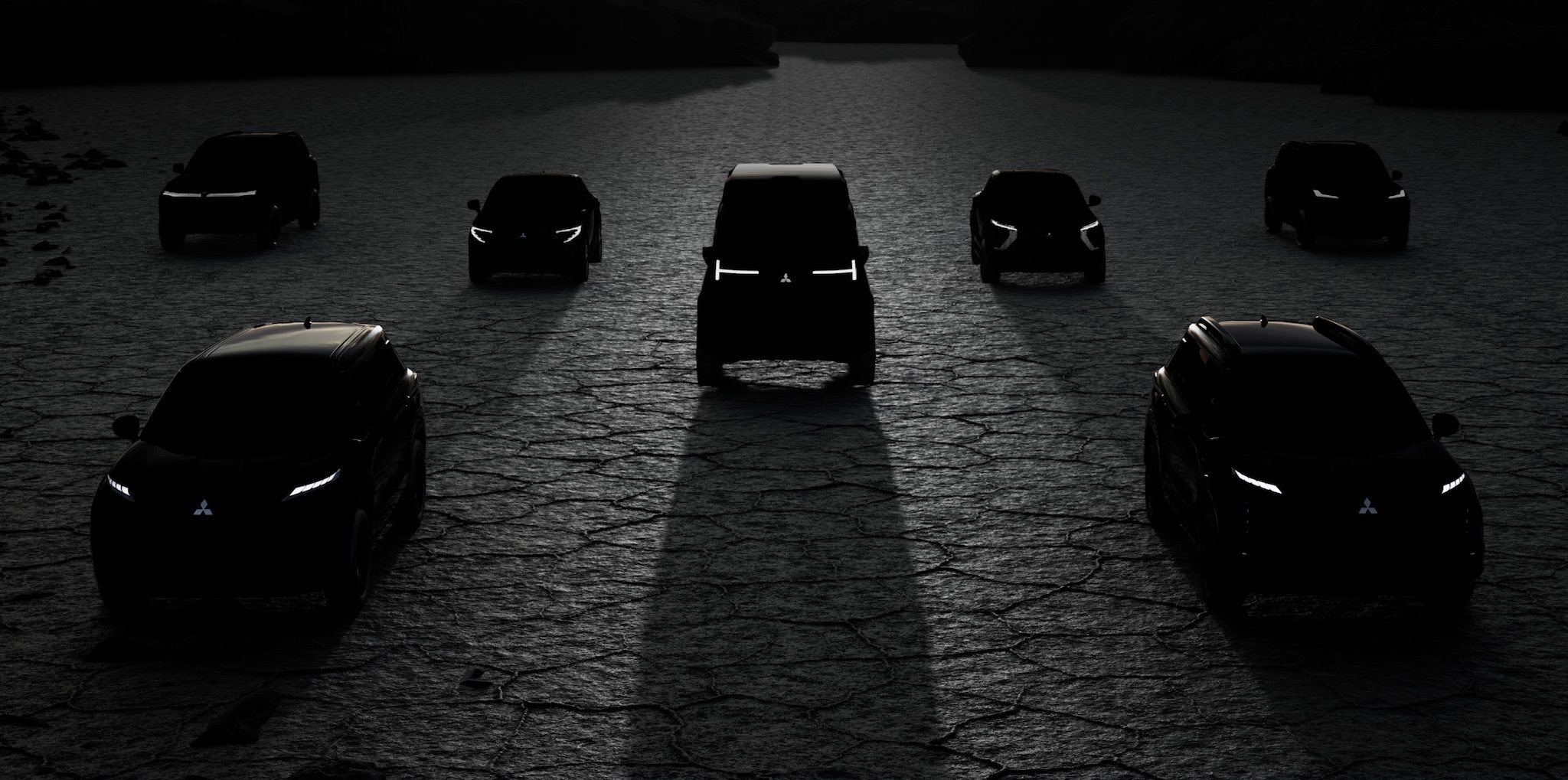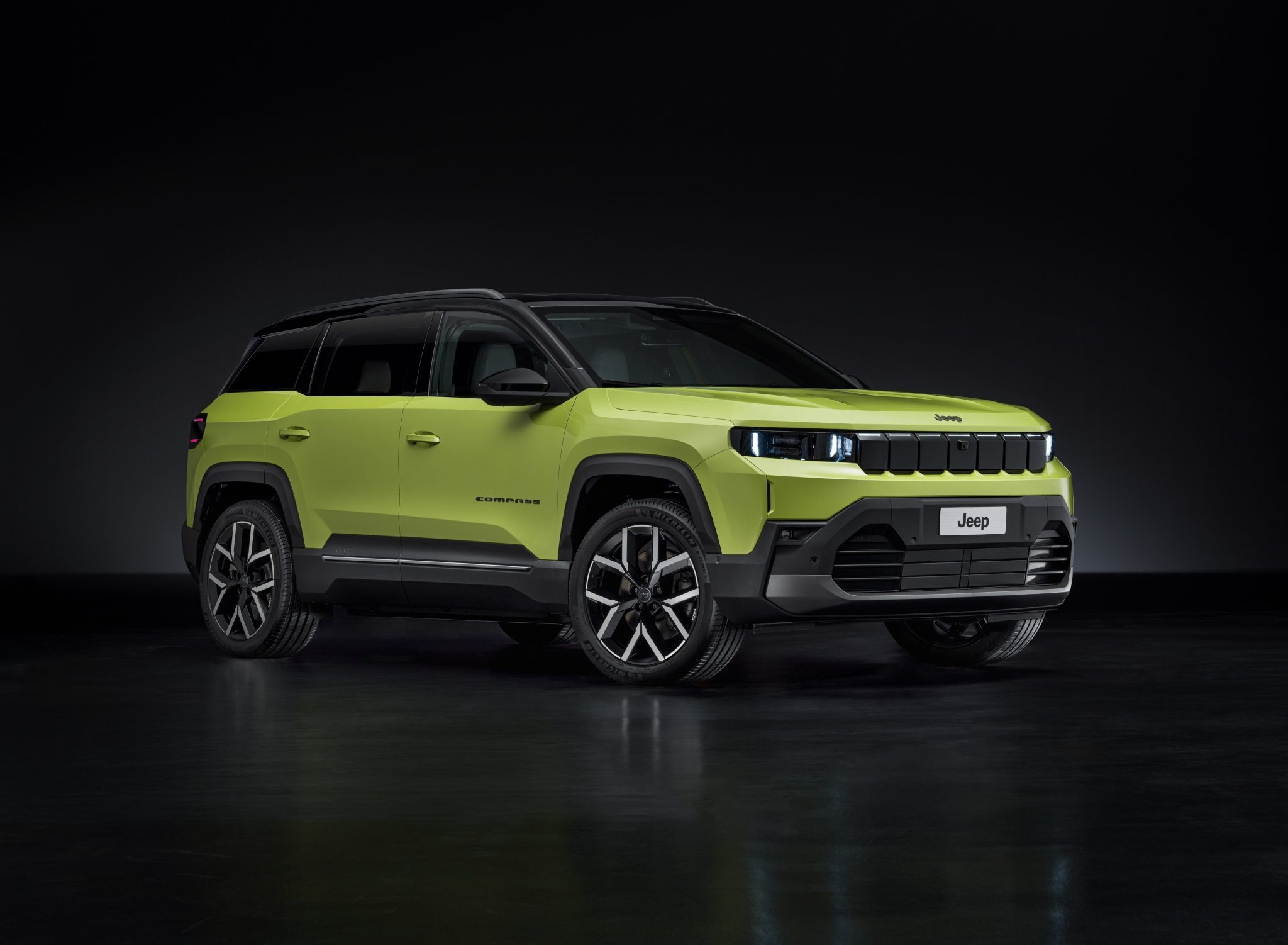-
Posts
56,001 -
Joined
-
Last visited
-
Days Won
547
Content Type
Forums
Articles
Garage
Gallery
Events
Store
Collections
Everything posted by Drew Dowdell
-
First 100k from the UK. The fact that there’s only one major manufacturer in the UK that exports in volume kinda makes it moot.
- 7 replies
-
- jaguar
- land rover
-
(and 1 more)
Tagged with:
-
The United States and United Kingdom have reached a deal on vehicle import tariffs into the U.S. that could serve as a model for future deals between the U.S. and other countries. As part of a larger trade deal, the UK will get preferential treatment on auto tariffs for the first 100,000 vehicles imported. Import tariffs, which started on April 3rd for UK vehicles, are currently at 25-percent and will be reduced to 10-percent on that first 100,000 units annually. The U.K. conversely agreed to lower its tariffs from 5.1-percent to 1.8-percent. The U.S. also dropped tariffs on U.K. steel. While 10-percent on vehicles is still four times the 2.5-percent charged prior to April 3rd, it is likely to still be a lower tax than those levied on many vehicles imported from Mexico or Canada that contain only 50-percent U.S. made parts. The 25-percent Tariffs on auto parts appear to remain in place. While Jaguar and Land Rover are the obvious benefactors of this trade agreement, Nissan has manufacturing facilities in the U.K. that could be utilized for production in North America. Previously, the Nissan plant in Sunderland, England produced the Infiniti QX30 for North America. The plant currently produces the Nissan Juke and Nissan Qashqai (Rogue Sport), neither of which are still sold in the U.S. Honda closed their UK manufacturing facility in 2021. View full article
- 7 replies
-
- jaguar
- land rover
-
(and 1 more)
Tagged with:
-
The United States and United Kingdom have reached a deal on vehicle import tariffs into the U.S. that could serve as a model for future deals between the U.S. and other countries. As part of a larger trade deal, the UK will get preferential treatment on auto tariffs for the first 100,000 vehicles imported. Import tariffs, which started on April 3rd for UK vehicles, are currently at 25-percent and will be reduced to 10-percent on that first 100,000 units annually. The U.K. conversely agreed to lower its tariffs from 5.1-percent to 1.8-percent. The U.S. also dropped tariffs on U.K. steel. While 10-percent on vehicles is still four times the 2.5-percent charged prior to April 3rd, it is likely to still be a lower tax than those levied on many vehicles imported from Mexico or Canada that contain only 50-percent U.S. made parts. The 25-percent Tariffs on auto parts appear to remain in place. While Jaguar and Land Rover are the obvious benefactors of this trade agreement, Nissan has manufacturing facilities in the U.K. that could be utilized for production in North America. Previously, the Nissan plant in Sunderland, England produced the Infiniti QX30 for North America. The plant currently produces the Nissan Juke and Nissan Qashqai (Rogue Sport), neither of which are still sold in the U.S. Honda closed their UK manufacturing facility in 2021.
- 7 comments
-
- 1
-

-
- jaguar
- land rover
-
(and 1 more)
Tagged with:
-

IONNA Aims for Doubles
Drew Dowdell replied to Drew Dowdell's topic in Electric Vehicles and Alternative Fuels
We have one Sheetz in my area that is getting the chargers. Not built yet, but listed as "Coming soon" -
Thanks, that's an oldie... I wanna say 2016 or so. Def pre-Covid.
-
Sorry! False alarm on the white smoke! That was me starting up my Toronado for the first time in a year!
-

Chevrolet News:Chevy Updates the Corvette Interior for 2026
Drew Dowdell replied to Drew Dowdell's topic in Chevrolet
I mean, that's all their vehicles these days, GM's entire Infotainment OS is Google based, all they do on the EV's is shut off the option. That doesn't preclude Android Auto and CarPlay. Volvo and Honda have no problem running CarPlay on their Google Built-In systems. -
IONNA is a fledgling charging network with big goals, 30,000 charging bays by the end of 2030 with just five years to accomplish it. Their first IONNA Rechargery broke ground in October of 2024 and the network came out of beta just in February this year, IONNA's shorter-term goal is for 1,000 charging bays open by the end of 2025. In April, IONNA opened six new Rechargeries, doubling their location footprint to 12 locations with 120 charging bays. The number of Rechargeries under construction is more than double their current footprint with another 15 locations under active construction. Back in February, IONNA had announced 100 locations under contract. That number in April has doubled to 200 locations with an additional 2,000 charging bays agreed on and in the pipeline. Late last year IONNA partnered with gas-station chain Sheetz in a strategic partnership to add Rechargeries at more than 50 Sheetz locations in the Eastern and Midwestern US. As part of this growth plan and to get the word out about their new network, IONNA is offering "Friends and Family" pricing to everyone at all IONNA stations with no subscriptions or additional fees. IONNA's founding member companies have begun rolling out Plug & Charge to select vehicles allowing for easy transactions through their respective branded apps. Additionally, some founding manufacturers are offering discounts at IONNA stations. BMW: Plug & Charge already live today. All IONNA locations and charge points are fully digitally integrated and accessible through the My BMW App and the in-vehicle navigation system. Special offers applicable to IONNA in the future. General Motors: Plug & Charge rolling out Q2 2025. GM EV drivers can easily find and access IONNA charging stations directly through their GM MyBrand apps, with full integration for a seamless experience. Honda: Plug & Charge in the future. Special offers applicable to IONNA. Hyundai: Plug & Charge is rolling out soon. 2025 IONIQ 5, IONIQ 5 N, IONIQ 6 and 2025 Genesis drivers who choose the Charging Credit offer receive up to $500 of charging credit through the ChargePoint app, with credits usable at IONNA stations. Kia: Plug & Charge coming soon. Kia America’s recently launched Kia Charge Pass program allows “find, charge & pay” capability within the Kia Access App. Mercedes-Benz: Plug & Charge live today. Model Year 2025 EV owners have the option to add a $1,000 public charging voucher to their MB.CHARGE PUBLIC account and apply it to charging sessions on the IONNA network. Stellantis: Plug & Charge coming soon. Certain model year drivers of the Jeep Wagoneer S, Dodge Charger Daytona and Fiat 500e who chose the Free2move Charge Go Package can apply the $600 of public charging credits at all IONNA Rechargeries. Toyota: Discounts coming soon. All Rechargery stations feature a combination of NACS and CCS plugs making compatibility with most modern EVs a breeze (Sorry Nissan Leaf owners, no CHAdeMO). Each dispenser can operated up to 400kW with 200kW available per vehicle. Many Rechargeries will feature pull-through facilities to accommodate EVs that are towing. IONNA was founded in 2024 by eight of the largest auto manufacturers with a mission to build a coast to coast nationwide network of reliable electric vehicle charging coupled with the amenities travelers need. View full article
-
IONNA is a fledgling charging network with big goals, 30,000 charging bays by the end of 2030 with just five years to accomplish it. Their first IONNA Rechargery broke ground in October of 2024 and the network came out of beta just in February this year, IONNA's shorter-term goal is for 1,000 charging bays open by the end of 2025. In April, IONNA opened six new Rechargeries, doubling their location footprint to 12 locations with 120 charging bays. The number of Rechargeries under construction is more than double their current footprint with another 15 locations under active construction. Back in February, IONNA had announced 100 locations under contract. That number in April has doubled to 200 locations with an additional 2,000 charging bays agreed on and in the pipeline. Late last year IONNA partnered with gas-station chain Sheetz in a strategic partnership to add Rechargeries at more than 50 Sheetz locations in the Eastern and Midwestern US. As part of this growth plan and to get the word out about their new network, IONNA is offering "Friends and Family" pricing to everyone at all IONNA stations with no subscriptions or additional fees. IONNA's founding member companies have begun rolling out Plug & Charge to select vehicles allowing for easy transactions through their respective branded apps. Additionally, some founding manufacturers are offering discounts at IONNA stations. BMW: Plug & Charge already live today. All IONNA locations and charge points are fully digitally integrated and accessible through the My BMW App and the in-vehicle navigation system. Special offers applicable to IONNA in the future. General Motors: Plug & Charge rolling out Q2 2025. GM EV drivers can easily find and access IONNA charging stations directly through their GM MyBrand apps, with full integration for a seamless experience. Honda: Plug & Charge in the future. Special offers applicable to IONNA. Hyundai: Plug & Charge is rolling out soon. 2025 IONIQ 5, IONIQ 5 N, IONIQ 6 and 2025 Genesis drivers who choose the Charging Credit offer receive up to $500 of charging credit through the ChargePoint app, with credits usable at IONNA stations. Kia: Plug & Charge coming soon. Kia America’s recently launched Kia Charge Pass program allows “find, charge & pay” capability within the Kia Access App. Mercedes-Benz: Plug & Charge live today. Model Year 2025 EV owners have the option to add a $1,000 public charging voucher to their MB.CHARGE PUBLIC account and apply it to charging sessions on the IONNA network. Stellantis: Plug & Charge coming soon. Certain model year drivers of the Jeep Wagoneer S, Dodge Charger Daytona and Fiat 500e who chose the Free2move Charge Go Package can apply the $600 of public charging credits at all IONNA Rechargeries. Toyota: Discounts coming soon. All Rechargery stations feature a combination of NACS and CCS plugs making compatibility with most modern EVs a breeze (Sorry Nissan Leaf owners, no CHAdeMO). Each dispenser can operated up to 400kW with 200kW available per vehicle. Many Rechargeries will feature pull-through facilities to accommodate EVs that are towing. IONNA was founded in 2024 by eight of the largest auto manufacturers with a mission to build a coast to coast nationwide network of reliable electric vehicle charging coupled with the amenities travelers need.
-

Chevrolet News:Chevy Updates the Corvette Interior for 2026
Drew Dowdell replied to Drew Dowdell's topic in Chevrolet
Early ones did. Perhaps that has changed. -

Chevrolet News:Chevy Updates the Corvette Interior for 2026
Drew Dowdell replied to Drew Dowdell's topic in Chevrolet
It's only on some EVs that it's limited. The Lyriq, Silverado EV, and Bolt EV/EUV have CarPlay and Android Auto -

Chevrolet News:Chevy Updates the Corvette Interior for 2026
Drew Dowdell posted a topic in Chevrolet
What matters is on the inside, right? Luckily, the Corvette already sports a sexy exterior, but for 2026, Chevrolet updated the interior to address some of the common complaints in the latest iteration of their legendary sports car. The biggest news is that the wall of buttons between the driver and passenger has been moved to a more conventional location under the screen, though not all buttons make the jump. Some functions such as heated/cooled seats are now controlled from the central touch screen. And screens they are aplenty! The updated infotainment screen increases in size to 12.7-inches diagonal, a larger 14-inch diagonal driver information cluster, and a new 6.6-inch diagonal auxiliary display to the left of the steering wheel. The drive mode selector has been relocated in line with the gear selector which opens up spaces for a new wireless phone charging pad, complete with a cover to keep the phone in place. The new left-side auxiliary screen display gives dedicated access to trip information or performance management. All three screens features sharper and more vivid graphics. The animations have been made smoother and cleaner. Drivers can select their preferred layout or allow the system to adjust automatically based on drive mode. The Performance Data Recorder's user interface has been completely redesigned to take advantage of the new, larger screens. For 2026, four new colors are available on all models: Sky Cool and Medium Ash Gray with Habanero accents: Monochrome cool grays with unexpected pops of bright Habanero Santorini Blue: Vivid shade of blue that is both vibrant and electric Very Dark Atmosphere: Rich chocolate brown paired with Jet Black and Natural Tan accents Ultimate Suede: Jet Black suede interior customizable through Adrenaline Red, Santorini Blue, and Competition Yellow accent stitch colors and matching seatbelts Customers can even spec a mixed seating option in Asymmetrical Adrenaline Red, with a racing-inspired Adrenaline Red Competition driver’s seat and a Jet Black GT2 passenger seat. The Ultimate Suede interior brings sueded microfiber to nearly all interior surfaces. Other new changes include: A new, available electrochromic roof, which allows customers to change the tint level of their targa roof glass at the press of a button – selecting between full, medium, and low tint options. The button to activate Charge+, which enables E-Ray drivers to replenish battery life more quickly or sustain battery charge for a track session, has been relocated to the steering wheel. Located just below the Z Mode button, Charge+ now has a more prominent location for ease of use. Two new exterior color options are available for all models: Roswell Green Metallic and Blade Silver Metallic. View full article -
What matters is on the inside, right? Luckily, the Corvette already sports a sexy exterior, but for 2026, Chevrolet updated the interior to address some of the common complaints in the latest iteration of their legendary sports car. The biggest news is that the wall of buttons between the driver and passenger has been moved to a more conventional location under the screen, though not all buttons make the jump. Some functions such as heated/cooled seats are now controlled from the central touch screen. And screens they are aplenty! The updated infotainment screen increases in size to 12.7-inches diagonal, a larger 14-inch diagonal driver information cluster, and a new 6.6-inch diagonal auxiliary display to the left of the steering wheel. The drive mode selector has been relocated in line with the gear selector which opens up spaces for a new wireless phone charging pad, complete with a cover to keep the phone in place. The new left-side auxiliary screen display gives dedicated access to trip information or performance management. All three screens features sharper and more vivid graphics. The animations have been made smoother and cleaner. Drivers can select their preferred layout or allow the system to adjust automatically based on drive mode. The Performance Data Recorder's user interface has been completely redesigned to take advantage of the new, larger screens. For 2026, four new colors are available on all models: Sky Cool and Medium Ash Gray with Habanero accents: Monochrome cool grays with unexpected pops of bright Habanero Santorini Blue: Vivid shade of blue that is both vibrant and electric Very Dark Atmosphere: Rich chocolate brown paired with Jet Black and Natural Tan accents Ultimate Suede: Jet Black suede interior customizable through Adrenaline Red, Santorini Blue, and Competition Yellow accent stitch colors and matching seatbelts Customers can even spec a mixed seating option in Asymmetrical Adrenaline Red, with a racing-inspired Adrenaline Red Competition driver’s seat and a Jet Black GT2 passenger seat. The Ultimate Suede interior brings sueded microfiber to nearly all interior surfaces. Other new changes include: A new, available electrochromic roof, which allows customers to change the tint level of their targa roof glass at the press of a button – selecting between full, medium, and low tint options. The button to activate Charge+, which enables E-Ray drivers to replenish battery life more quickly or sustain battery charge for a track session, has been relocated to the steering wheel. Located just below the Z Mode button, Charge+ now has a more prominent location for ease of use. Two new exterior color options are available for all models: Roswell Green Metallic and Blade Silver Metallic.
-
As someone who lives in an area with actual bridge collapses (right around the corner from where we had lunch years ago @A Horse With No Name) I'm in favor of raising gas taxes to pay for these repairs. Luckily, no one was seriously injured in this. Many of our bridges around here have netting on their undersides to catch the chunks that fall off them. One bridge, before it was replaced, had another bridge built under it solely to catch concrete falling and was featured on John Oliver.
-

Mitsubishi News: Mitsubishi Readies Pint-Sized Electric Crossover
Drew Dowdell replied to Drew Dowdell's topic in Mitsubishi
I didn't like the design of the Ariya aesthetically, but it did seem to be decent quality. Also, they've been doing EVs longer than anyone, so they have the most experience in the industry.- 6 replies
-
- electric vehicles
- mitsubishi
-
(and 1 more)
Tagged with:
-

Mitsubishi News: Mitsubishi Readies Pint-Sized Electric Crossover
Drew Dowdell replied to Drew Dowdell's topic in Mitsubishi
The specs on the Leaf look pretty darn good, so I would expect them to carry over. Nissan and Mitsubishi might be back in the game.- 6 replies
-
- 1
-

-
- electric vehicles
- mitsubishi
-
(and 1 more)
Tagged with:
-
Coming Summer of 2026, Mitsubishi will bring its first new model in 7 years to the U.S. and Canadian markets, an as-yet-unnamed sub-compact electric crossover coupe based on the coming third generation Nissan Leaf. The new model is the first of 4 new or updated models Mitsubishi plans to release from 2026 to 2030. Current plans are for the model to be built in Japan, risking tariffs and loss of EV tax credits. It will ride on the same CMF-EV platform as the larger Nissan Ariya and will forgo an all-wheel drive option to keep price down. Like the Leaf, it will feature an NACS charging port enabling access to Tesla Superchargers and liquid cooled batteries. Based on the teaser, the front end lighting looks nearly identical to the third-generation Nissan Leaf we have already seen. We don't yet know if there will be more differentiation between the models beyond size and badge. The next Nissan Leaf is predicted to have a range of around 340 miles, but the smaller Mitsubishi version will target a range closer to 300 miles. View full article
- 6 replies
-
- electric vehicles
- mitsubishi
-
(and 1 more)
Tagged with:
-
Coming Summer of 2026, Mitsubishi will bring its first new model in 7 years to the U.S. and Canadian markets, an as-yet-unnamed sub-compact electric crossover coupe based on the coming third generation Nissan Leaf. The new model is the first of 4 new or updated models Mitsubishi plans to release from 2026 to 2030. Current plans are for the model to be built in Japan, risking tariffs and loss of EV tax credits. It will ride on the same CMF-EV platform as the larger Nissan Ariya and will forgo an all-wheel drive option to keep price down. Like the Leaf, it will feature an NACS charging port enabling access to Tesla Superchargers and liquid cooled batteries. Based on the teaser, the front end lighting looks nearly identical to the third-generation Nissan Leaf we have already seen. We don't yet know if there will be more differentiation between the models beyond size and badge. The next Nissan Leaf is predicted to have a range of around 340 miles, but the smaller Mitsubishi version will target a range closer to 300 miles.
- 6 comments
-
- electric vehicles
- mitsubishi
-
(and 1 more)
Tagged with:
-

Tariff Tuesday - Big Trouble in Little Crossovers
Drew Dowdell replied to Drew Dowdell's topic in Opinion
I've got less than $3k left on the Avalanche loan. The Chrysler loan final payment is this month. I'll redirect that to finish off the Avalanche early. I've only got 63k miles on the Avalanche. $75k for an EValanche buys a lot of gas. We're heading into motorcycle season where the truck stays parked as much as possible. I think we're just going to be in a holding position on vehicles for a while. -
At a press conference today, Stellantis unveiled the third-generation Jeep Compass. This version for Europe is expected to be close to the version we will see in North America with some tweaks to the powertrain and lighting options. The Compass' direction in North America has been in flux after the sudden departure of former Stellantis CEO Carlos Tavares in December of 2024. More on that later. While the new Compass cuts a familiar shape with the present model, it is built on an entirely new platform capable of supporting gas, electric, and hybrid configurations. Now blockier and more rugged looking the new Jeep Compass retains all the familiar Jeep styling cues. The taillights are in an X-pattern with an illuminated Jeep logo between. European models get matrix LED headlights, however difficulty with regulatory agencies in the U.S. mean that this feature is unlikely to make the trip across the pond. Built on the Stellantis STLA Medium, the Compass has also grown. Now 6.1-inches longer than its predecessor, the Compass moves firmly into the size class occupied by the Toyota RAV-4 and Honda CR-V. Stellantis already uses this platform for two Peugeots, a Citroen, and an Opel. In Europe, the powertrain offerings will include a 148 horsepower mild-hybrid, a 195 horsepower plug-in hybrid, and three fully electric options ranging from a 213 horsepower front-wheel drive model to up to 375 horsepower for the top-line all-wheel drive model. Introduced on the Compass, a new, more powerful rear motor with an additional 65 peak horsepower and 171 lb-ft of torque that when run though the 14:1 reducer provides an available 3100 lb-ft of torque at the rear wheels. Jeep claims this gives the Compass the ability to climb a 20-degree slope with zero traction at the front wheels. While battery sizes were not mentioned, on the European cycle, Jeep says the battery-electric version will be available with up to 403 miles of range. The STLA Medium platform is a 400v architecture and in the European Compass supports 160kw DC-fast charging. As it is a Jeep, when properly equipped it maintains its off-road chops. It has 7.9-inches of ground clearance when opting for all-wheel drive, 20-degree approach, 15-degree breakover, and 26-degree departure angles plus a water fording depth of up to 18.5 inches. All-wheel drive models come standard with hill-decent control. The completely revamped interior is modern without going crazy with large screens. The ultra-wide 16-inch radio screen sits nicely at the top of the center stack while a 10-inch reconfigurable digital gauge screen keeps the driver informed. Jeep did keep plenty of physical buttons, but they are capacitive / haptic touch. Level-2 autonomous driving will be available in certain trims. For European consumption, the Jeep Compass will be built at Stellantis' Melfi plant in Italy. Compass for the U.S. As we mentioned earlier, the Compass for the U.S. has been delayed due to the departure of the Stellantis CEO. The speculation is that Tavares had pushed for the Compass to be released in battery-electric form first with hybrid options to come later and after he left the brand changed direction to release the hybrid first. Further complicating matters now is that the Compass in North America is to be manufactured at Stellantis' Brampton Assembly Plant in Canada and the tariffs imposed by President Trump have threatened to upend those production plans. U.S. customers are likely to be waiting a while longer for the third-generation Compass than our European friends who will be able to purchase one later this year. Related: Jeep Unsure of Direction on Compass Stellantis CEO Carlos Tavares quits over dispute with company board View full article
- 4 replies
-
- 1
-

-
- electric vehicles
- hybrid
-
(and 2 more)
Tagged with:
-
At a press conference today, Stellantis unveiled the third-generation Jeep Compass. This version for Europe is expected to be close to the version we will see in North America with some tweaks to the powertrain and lighting options. The Compass' direction in North America has been in flux after the sudden departure of former Stellantis CEO Carlos Tavares in December of 2024. More on that later. While the new Compass cuts a familiar shape with the present model, it is built on an entirely new platform capable of supporting gas, electric, and hybrid configurations. Now blockier and more rugged looking the new Jeep Compass retains all the familiar Jeep styling cues. The taillights are in an X-pattern with an illuminated Jeep logo between. European models get matrix LED headlights, however difficulty with regulatory agencies in the U.S. mean that this feature is unlikely to make the trip across the pond. Built on the Stellantis STLA Medium, the Compass has also grown. Now 6.1-inches longer than its predecessor, the Compass moves firmly into the size class occupied by the Toyota RAV-4 and Honda CR-V. Stellantis already uses this platform for two Peugeots, a Citroen, and an Opel. In Europe, the powertrain offerings will include a 148 horsepower mild-hybrid, a 195 horsepower plug-in hybrid, and three fully electric options ranging from a 213 horsepower front-wheel drive model to up to 375 horsepower for the top-line all-wheel drive model. Introduced on the Compass, a new, more powerful rear motor with an additional 65 peak horsepower and 171 lb-ft of torque that when run though the 14:1 reducer provides an available 3100 lb-ft of torque at the rear wheels. Jeep claims this gives the Compass the ability to climb a 20-degree slope with zero traction at the front wheels. While battery sizes were not mentioned, on the European cycle, Jeep says the battery-electric version will be available with up to 403 miles of range. The STLA Medium platform is a 400v architecture and in the European Compass supports 160kw DC-fast charging. As it is a Jeep, when properly equipped it maintains its off-road chops. It has 7.9-inches of ground clearance when opting for all-wheel drive, 20-degree approach, 15-degree breakover, and 26-degree departure angles plus a water fording depth of up to 18.5 inches. All-wheel drive models come standard with hill-decent control. The completely revamped interior is modern without going crazy with large screens. The ultra-wide 16-inch radio screen sits nicely at the top of the center stack while a 10-inch reconfigurable digital gauge screen keeps the driver informed. Jeep did keep plenty of physical buttons, but they are capacitive / haptic touch. Level-2 autonomous driving will be available in certain trims. For European consumption, the Jeep Compass will be built at Stellantis' Melfi plant in Italy. Compass for the U.S. As we mentioned earlier, the Compass for the U.S. has been delayed due to the departure of the Stellantis CEO. The speculation is that Tavares had pushed for the Compass to be released in battery-electric form first with hybrid options to come later and after he left the brand changed direction to release the hybrid first. Further complicating matters now is that the Compass in North America is to be manufactured at Stellantis' Brampton Assembly Plant in Canada and the tariffs imposed by President Trump have threatened to upend those production plans. U.S. customers are likely to be waiting a while longer for the third-generation Compass than our European friends who will be able to purchase one later this year. Related: Jeep Unsure of Direction on Compass Stellantis CEO Carlos Tavares quits over dispute with company board
- 4 comments
-
- electric vehicles
- hybrid
-
(and 2 more)
Tagged with:

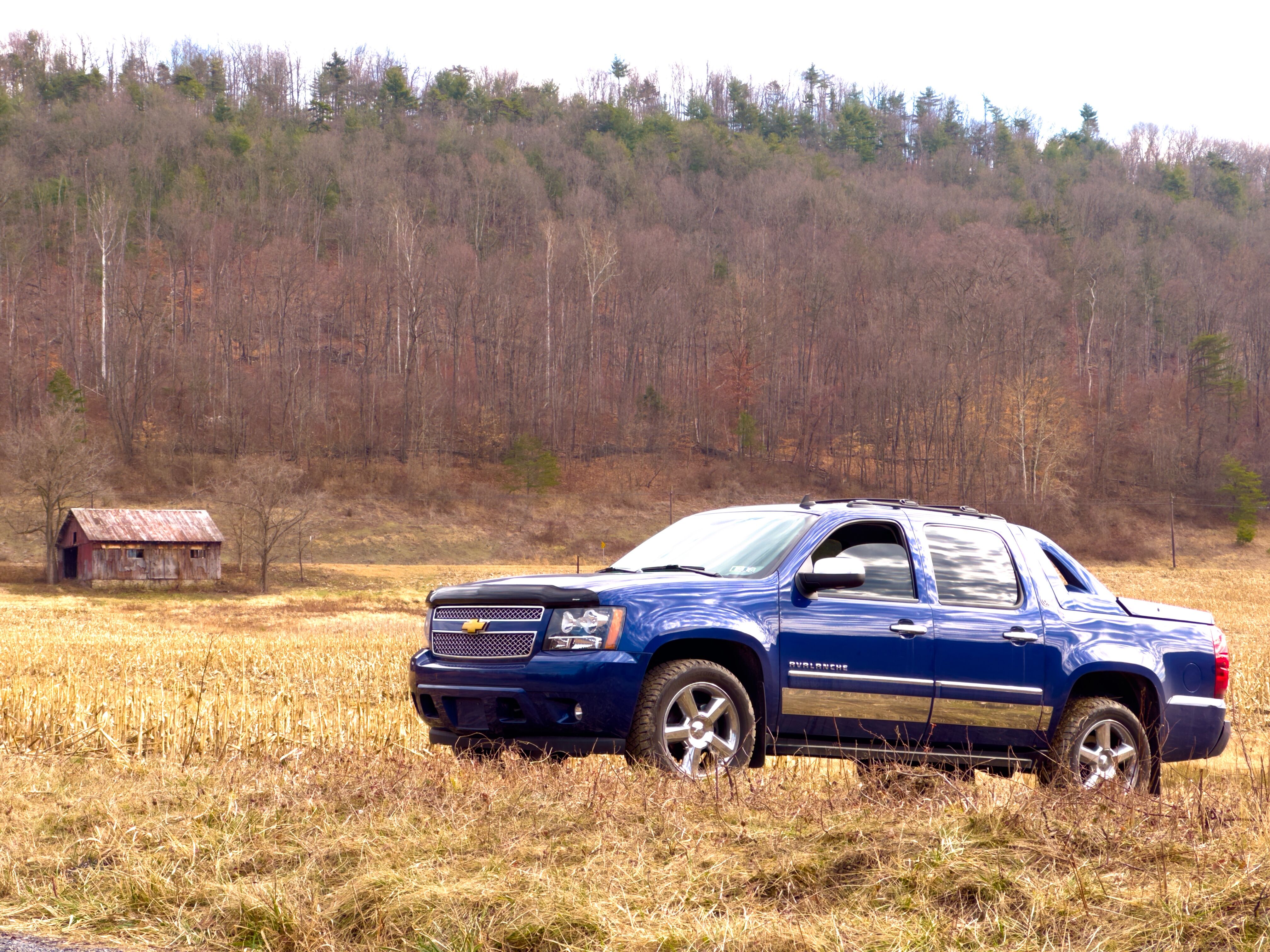


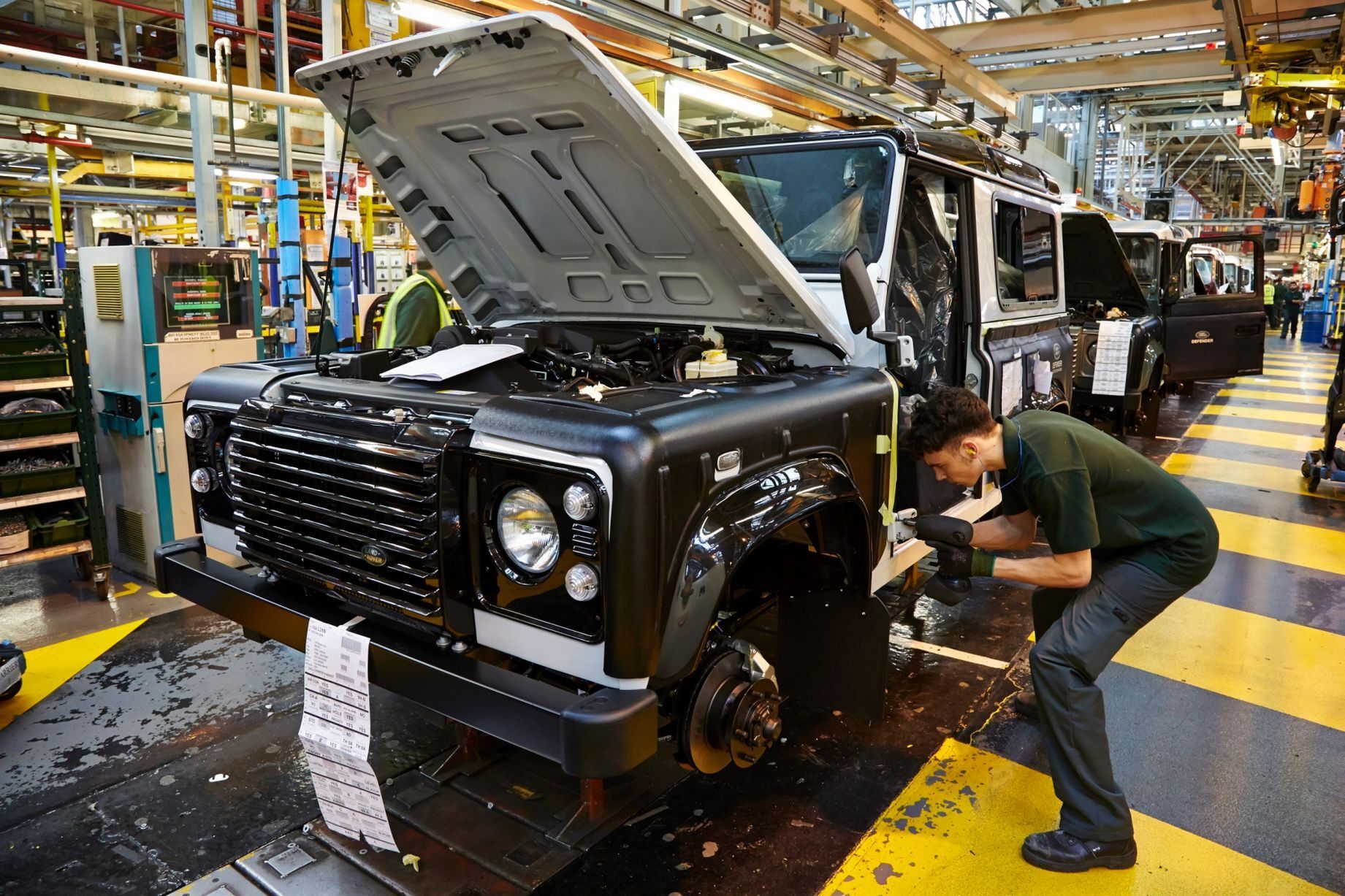






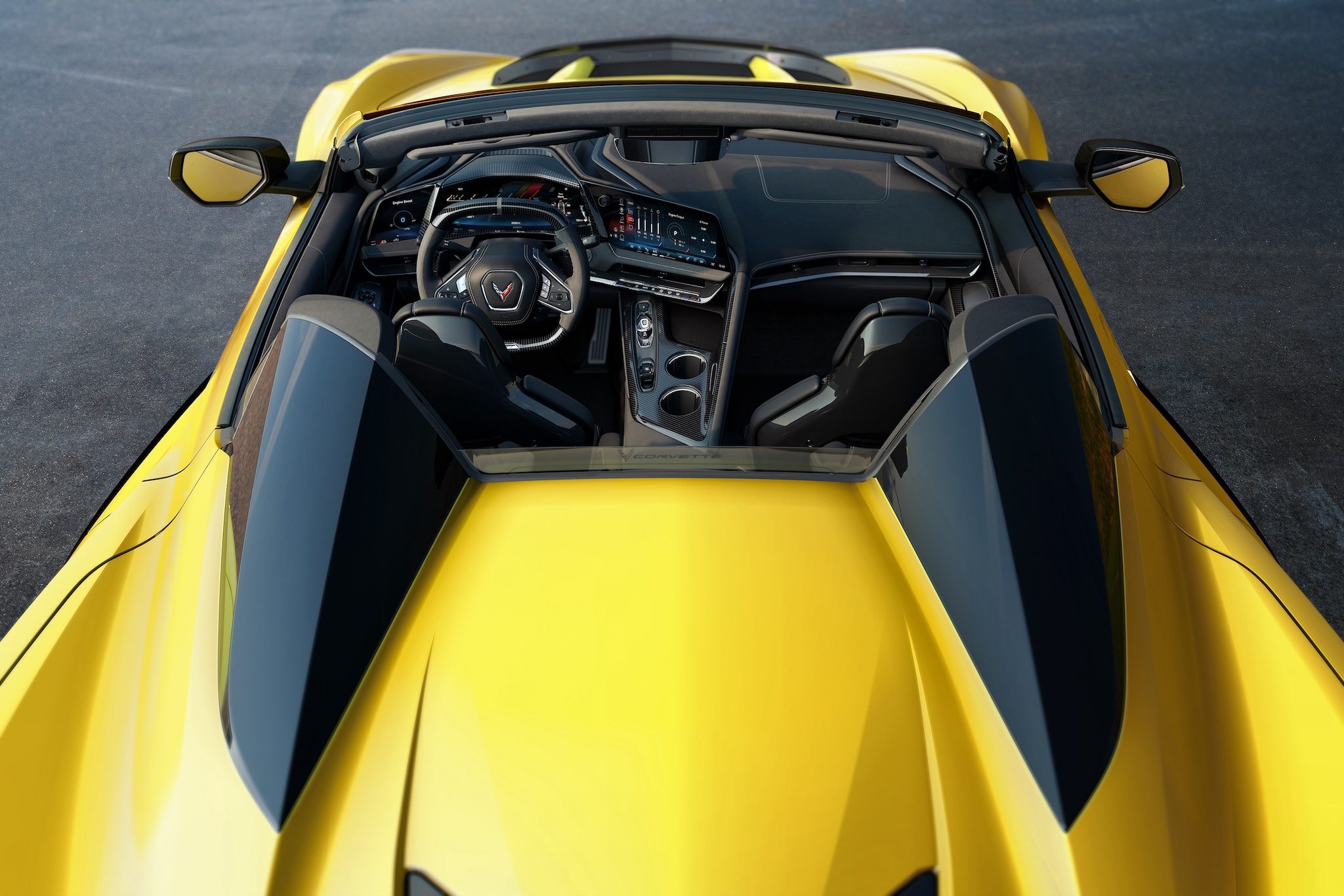



_(2).thumb.jpg.bedd395a71972d4a75cac5e951700549.jpg)
